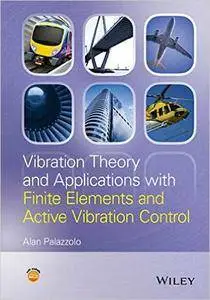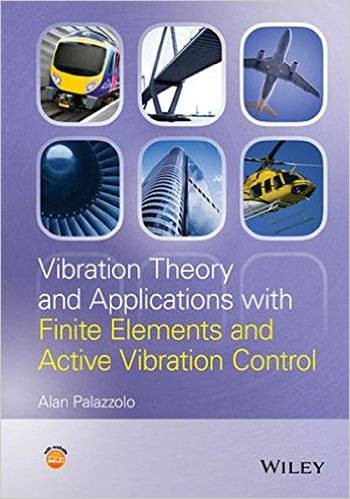Alan Palazzolo, "Vibration Theory and Applications with Finite Elements and Active Vibration Control"
English | ISBN: 1118350804 | 2016 | 944 pages | PDF | 27 MB
English | ISBN: 1118350804 | 2016 | 944 pages | PDF | 27 MB
A comprehensive and practical guide to vibration theory with particular emphasis on finite element modeling using real world engineering scenarios
Vibration Theory and Applications with Finite Element Analysis provides extensive coverage of vibration–related topics, with particular emphasis on the three basic areas of modeling, analysis and applications. The author recognizes that a thorough understanding of mathematical and modeling techniques is essential before progressing to methods of analysis and there is a complete section covering the relevant math and programming techniques in MATLAB and MAPLE. By using a wide range of practical examples and exercises, the author demonstrates how the math relates to engineering and its applications, connecting theory to engineering practice and problem solving. Based on many years of research and teaching, this book brings together all the important topics in vibration theory, including failure models, kinematics and modeling, unstable vibrating systems, rotor dynamics and finite element methods utilizing truss, beam, plate and solid elements. It also explores in detail active vibration control, instability, bifurcation theory and paths to chaos. The book provides the modeling skills and knowledge required for modern engineering practice, plus the tools needed to identify, formulate and solve engineering problems effectively.
Presents a thorough description of vibration topics and mathematical techniques from basic through to advanced levels
Uses practical examples to illustrate the theory, providing an awareness of the concepts and how they apply to real life engineering situations
Covers in detail topics such as 3D beams and solid elements and trusses, magnetic theory for active control and magnetic bearings and high cycle fatigue, based on the author s extensive research
Includes techniques for deriving equations of motion via Newton s Laws, Lagrange, and Gibbs/Ansell approach
Fully illustrated throughout, with a solution manual including MATLAB and MAPLE codes
An invaluable resource for graduate students of civil, mechanical and aerospace engineering; applied mathematics.



